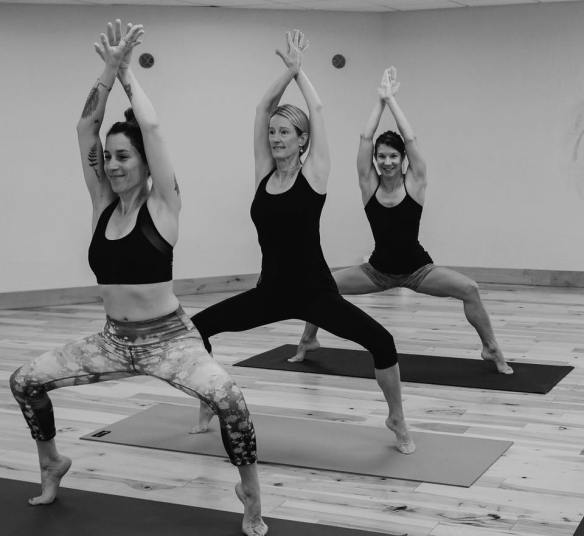Nasal Breathing (Pranayama) vs. Mouth Breathing; Moving from Stress & Anxiety to a State of Calm & Relaxation by Trudee Sanbonmatsu
At the beginning of every yoga class, I impress upon my students the importance of yogic breathing during practice. It is so important that the poses are secondary to yogic breathing; a student can consider their practice perfect, if all they do during class is yogic breathing, while adding few or no poses.
The ancient Indian system of yoga identified prana as the universal life force or energy which distinguishes the living from the dead. Start by finding a slow, deep, rhythmic breath, in through the nose and out through the nose. Then, find a ratio of inhale to exhale wherein the exhale is a little longer than the inhale; the exhale is as powerful at the end as it is in the beginning. On the initial inhale, soften the belly allowing the diaphragm to move downwards and fill up the lungs. On the exhale, drawn the navel in and up, expressing all the air out the lungs. These simple steps will: calm the mind, reduce worries and anxieties; improve focus and attention; increase energy, bringing enthusiasm and positivity; boost the immune system; rejuvenate the body and mind; and, may even slow down the aging process.
Take a moment now to become aware of your breath. Is it deep or shallow, smooth or choppy? Most of us breathe from the chest. Shallow breathing sends a signal to the brain that all is not well and we are stressed. Alternatively, breathing from the abdomen boosts respiration, ensures a rich supply of oxygen to the brain and signals that all is well. If you watch new born babies, you will see that their stomachs rise and fall as they breathe in and out. This type of breathing calms the Sympathetic Nervous System (SNS) our body’s fight, flight, freeze reaction and switches on the Parasympathetic Nervous System
(PNS) producing a feeling of calm and relaxation.

If we breathe a lower volume of air by breathing in a slow controlled fashion through the nose, we increase the amount of carbon dioxide, and can deliver more oxygen to our muscles and organs including the heart and brain. Breathing in and out more air than necessary results in hypocapnia, a state of reduced carbon dioxide in the blood. You inhale and exhale too much when breathing in and out the mouth. This reduces oxygen to the brain and body tissues. Nasal breathing increases the levels of nitric oxide. A key signaling molecule used throughout the body. It regulates air flow and helps prevent
over-breathing.
More professional athletes are now using the ancient wisdom of pranayama breathwork to excel at their sport. Ultra-marathoner Scott Jurek, seven-time consecutive winner of the Western States 100 Mile Endurance Run, states that slowing down his breath rate and breathing from his belly through his nose, is essential to his athletic success.
Pay attention to your breath. Breathing in and out of the mouth signals the nervous system that something is wrong. Mouth breathing means difficult breathing and this, in turn, means deficient oxygenation of the tissues with the result of lowered vital organ and brain activity. To move from the SNS into the PNS, find an everyday situation and train your brain to start automatically breathing yogic breath. One suggestion is when driving, each time you come to a stop light, soften your belly and inhale then exhale slowly always through the nose. Over time you will naturally begin to exist in a state of calm and relaxation, instead of in a state of constant stress and anxiety.
Thank You to Trudee Sanbonmatsu, Park City’s Best Yoga Instructor 2015 & 2016 for taking the time to prepare this article. If you feel it’s time to benefit from Yoga -try a class with Trudee, check out her studio website, Yoga Kula Project for classes and times. Namaste! 💚🙏🕉🌸


